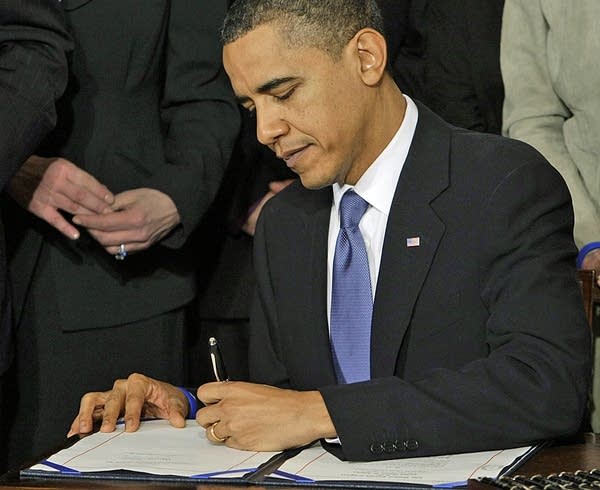Public remains ambivalent over health care reform
Go Deeper.
Create an account or log in to save stories.
Like this?
Thanks for liking this story! We have added it to a list of your favorite stories.

Recent polls show the public's ambivalence on the new health care law continues, nine months after the law's passage last March.
A Kaiser Foundation poll found about 40 percent of Americans support the law and about the same portion oppose it.
Experts are debating whether President Obama and Congressional Democrats have done enough to sell the new health law to the public.
John King says when you're trying to shape public opinion you can't rest. The executive with Minneapolis-based Fallon Advertising is an expert in crafting messages to grab the public's attention. Fallon's clients include: Cadillac, NBC and Travelers Insurance. King says in 24/7 world, news outlets and smart phones never sleep.
Turn Up Your Support
MPR News helps you turn down the noise and build shared understanding. Turn up your support for this public resource and keep trusted journalism accessible to all.
"If you're not out there managing your story proactively and shaping it and waking up every day and figuring out what you want that page to say absolutely the other side will," he said.
Kathleen Hall-Jamieson, a communications expert at the Annenberg Public Policy Center, says that's exactly what happened with health care reform. She said Democrats were too quiet, and Republicans filled the void with characterizations such as "government takeover of health care" and "death panels."
Democrats, she said. needed to tout the benefits of reform such as allowing young people to stay on parental insurance to age 26, or increasing prescription drug coverage for seniors.
"The Obama adminstration failed to clearly articulate what it was passing as it was trying to argue for health care reform," she said. "It failed once it passed to communicate the significance of the individual items in the reform and then in the 2010 elections as the legislation was vilified throughout the U.S. by Republican candidates and not defended by Democratic candidates."
Hall-Jamieson said every time there's been a major piece of social legislation that affects a large part of the economy, there's a lot of public confusion. And with that confusion, she said, comes opportunity to shape public perception of the law.
Recently government ads have started appearing on television and the Internet showing two senior citizens talking about some of the benefits of the health care law for them, including 50 percent discounts on name-brand prescriptions for seniors in the coverage gap known as the "doughnut hole."
Kathleen Hall-Jamieson said the new ads are good but too little and too late.

Administration officials did not return calls seeking comment. But the White House has set up a website that responds to attacks on the legislation.
Regardless, health policy expert Drew Altman, president and CEO of the Kaiser Family Foundation, said the administration's communication problem is just a symptom of a larger problem: Americans fundamentally disagree on what kind of health care system is good for the country.
"Health reform has always been a divisive issue, a faultline between liberals and conservatives, Republicans and Democrats in a fiercely partisan Washington and has been for a very long time," he said.
Altman says the divisions over health care run deep, and the fierce fight over the legislation shouldn't surprise anyone. He says the debate will continue for years as the measures take effect.





